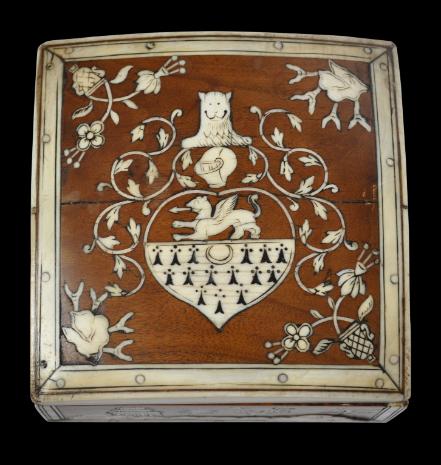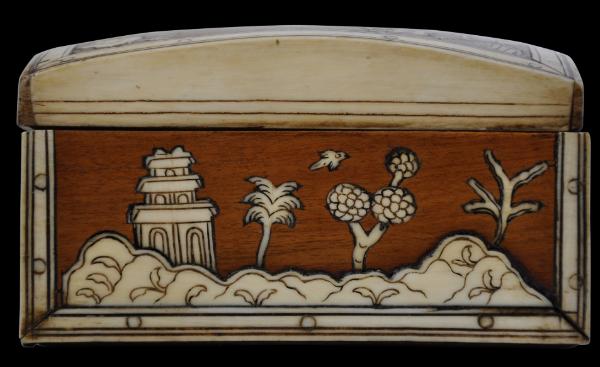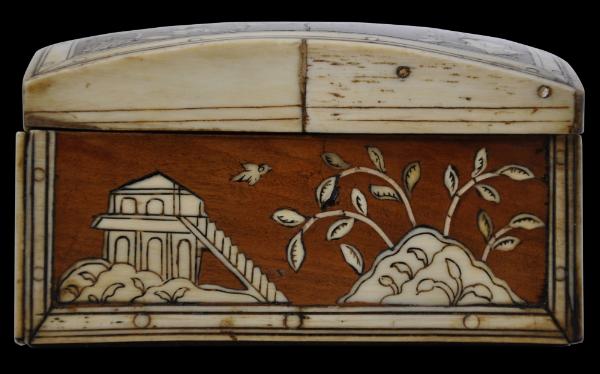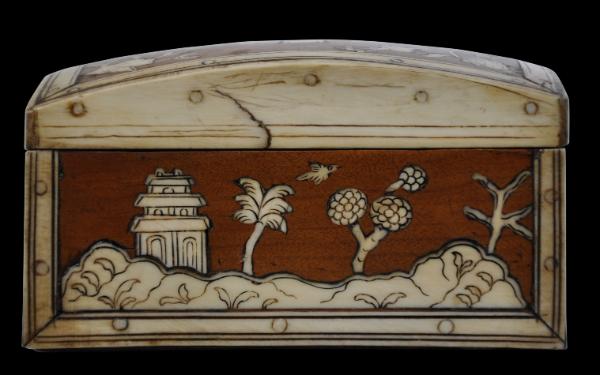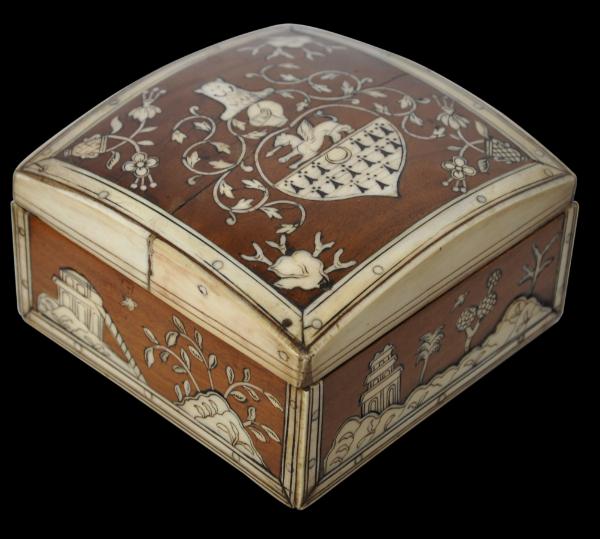
Colonial Vizagapatam Box
Early Wooden Box inlaid in Ivory with Coat of Arms – possibly of Sir Thomas Cooke (c.1648-1709) Governor of the East India Company
Vizagapatam, India
circa 1700
width: 9.3cm, depth: 9.3cm, height: 5.4cm
This fine ivory-inlaid box appears to be a particularly early example of inlay work from Vizagapatam. It comprises rosewood inlaid in ivory. Each of the four sides in decorated with two sets of similar topographical scenes, which might have been intended to look like Indian scenes might also represent a local attempt at copying a Chinese prototype.
The lid of the box is domed and has ivory borders secured with ivory pins. A coat of arms with a helm and crest on top of the helm decorates the centre. The lower part of the shield is decorated with ermine and includes a crescent which, according to London’s College of Arms, most probably is a mark of cadency, a device used to show from which son one is descended. A crescent indicates that one is descended from a second son. Such devices were popular in the seventeenth century but went out of fashion by the early eighteenth century. This suggests that the box is no later than the early 18th century.
The College of Arms has opined that the coat of arms most probably belongs to an English Suffolk family called Cooke, and that these arms were used by Sir Thomas Cooke, Lord of the Manor of Hackney and Governor of the East India Company (c.1648-1709). It is not clear that Sir Thomas Cooke actually went to India himself but it would not be surprising if a box with his coat of arms was commissioned by or form him from Vizagapatam, conceivably almost as a trade sample to show the Company hierarchy back in London of the new product lines that the Company was in the process of securing in India.
Vizagapatam is a port on the northern part of the Coromandel Coast on India’s east coast. It became a centre for cabinet making and ivory inlay work dominated by members of the Kamsali caste. The European trading companies such as England’s East India Company used the skills of the Kamsali workers to make items for the European market. According to Jaffer (2001, p. 172), the first written references to the inlay work of Vizagapatam appeared in the mid-eighteenth century by which time the industry was already well established.
The box here is in fine condition and is without significant losses to the inlay. If indeed the box does show the coat of arms of Sir Thomas Cooke, then this box is likely to be the earliest known demonstrable example of Vizagapatam work for the European market.
References
College of Arms, London, pers. coms.
Jaffer, A.,
Furniture from British India and Ceylon: A Catalogue of the Collections in the Victoria and Albert Museum and the Peabody Essex Museum, Timeless Books, 2001.Provenance:
UK art market
Inventory no.: 3009
RESERVED
Ask about this item

